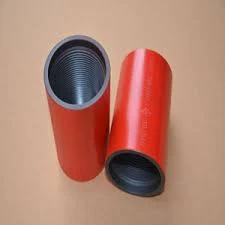- Afrikaans
- Albanian
- Amharic
- Arabic
- Armenian
- Azerbaijani
- Basque
- Belarusian
- Bengali
- Bosnian
- Bulgarian
- Catalan
- Cebuano
- Corsican
- Croatian
- Czech
- Danish
- Dutch
- English
- Esperanto
- Estonian
- Finnish
- French
- Frisian
- Galician
- Georgian
- German
- Greek
- Gujarati
- Haitian Creole
- hausa
- hawaiian
- Hebrew
- Hindi
- Miao
- Hungarian
- Icelandic
- igbo
- Indonesian
- irish
- Italian
- Japanese
- Javanese
- Kannada
- kazakh
- Khmer
- Rwandese
- Korean
- Kurdish
- Kyrgyz
- Lao
- Latin
- Latvian
- Lithuanian
- Luxembourgish
- Macedonian
- Malgashi
- Malay
- Malayalam
- Maltese
- Maori
- Marathi
- Mongolian
- Myanmar
- Nepali
- Norwegian
- Norwegian
- Occitan
- Pashto
- Persian
- Polish
- Portuguese
- Punjabi
- Romanian
- Russian
- Samoan
- Scottish Gaelic
- Serbian
- Sesotho
- Shona
- Sindhi
- Sinhala
- Slovak
- Slovenian
- Somali
- Spanish
- Sundanese
- Swahili
- Swedish
- Tagalog
- Tajik
- Tamil
- Tatar
- Telugu
- Thai
- Turkish
- Turkmen
- Ukrainian
- Urdu
- Uighur
- Uzbek
- Vietnamese
- Welsh
- Bantu
- Yiddish
- Yoruba
- Zulu
seamless pipe
The Advantages and Applications of Seamless Pipes
Seamless pipes are a crucial component in various industries, providing essential solutions for transporting fluids and gases. Unlike welded pipes, which are formed by joining two separate pieces, seamless pipes are manufactured from a solid round steel billet, which is heated and molded into a tubular shape without any seams or welds. This unique manufacturing process offers a range of distinct advantages that make seamless pipes a preferred choice in many applications.
One of the most notable benefits of seamless pipes is their superior strength and durability. The absence of seams eliminates weak points that could be prone to failure under pressure. This makes seamless pipes particularly suitable for high-stress applications, such as in the oil and gas industry, where they are used to transport crude oil, natural gas, and other fluids at high pressures and temperatures. The robustness of seamless pipes ensures that they can withstand harsh conditions without compromising integrity.
In addition to strength, seamless pipes offer excellent resistance to corrosion and wear
. They can be coated or treated to enhance their durability further, making them ideal for use in environments that involve exposure to corrosive substances. This quality is particularly beneficial in chemical processing, where the need for reliable materials is paramount.seamless pipe

Moreover, seamless pipes provide consistency in wall thickness and diameter, which is critical for both structural integrity and the efficiency of fluid flow. Such uniformity aids in reducing the risk of leaks and ruptures, making them a safer option. This consistency also contributes to their overall performance in applications that require precision, such as in aerospace engineering or high-performance automotive systems.
Seamless pipes are utilized in a variety of sectors, including construction, manufacturing, and energy production. In construction, they are often used for scaffolding and structural supports, while in manufacturing, they serve as crucial components in machinery and equipment. The energy sector, particularly the oil and gas industry, relies heavily on seamless pipes for pipelines and drilling applications.
Another critical aspect of seamless pipes is their adaptability. They can be produced in various materials, including carbon steel, stainless steel, and alloy steel, allowing for custom solutions that meet specific application requirements. This versatility extends to dimensions, as seamless pipes can be manufactured in a wide range of sizes to fit unique project specifications.
In conclusion, seamless pipes stand out for their strength, durability, and resistance to corrosion, making them an ideal choice for numerous industrial applications. Their ability to provide reliable solutions under high pressure and extreme conditions positions them as a vital component in modern infrastructure. As industries continue to evolve, the demand for seamless pipes will likely grow, driven by the need for efficiency, safety, and reliability in transporting crucial resources.
-
Tubing coupling plays a significant role in the chemical industryNewsApr.03,2025
-
The Importance of Tubing Crossover in Various Industrial FieldsNewsApr.03,2025
-
The characteristics and important role of Tubing Pup JointNewsApr.03,2025
-
Characteristics and functions of Pup jointNewsApr.03,2025
-
Characteristics and Functions of Pup Joint PipeNewsApr.03,2025
-
Application of Coupling Casing in Various ScenariosNewsApr.03,2025







